Care organisations in the lead of caretech innovation
The Dutch care organisation Zuyderland gained a lot of experience with technology in the health care sector. It has a clear vision on innovation and a strong ambition to become a leader in this field. Roy Beumers and Maarten Coolen already work together for years to achieve this. What are their experiences?
Care organisations in the lead of caretech innovation
The Dutch care organisation Zuyderland gained a lot of experience with technology in the health care sector. It has a clear vision on innovation and a strong ambition to become a leader in this field. Roy Beumers and Maarten Coolen already work together for years to achieve this. What are their experiences?
The journey of Roy Beumers and Maarten Coolen, Zuyderland
First stage
Acquiring ideas
For Zuyderland, the development of care technology emerged from their vision on community concepts for older people +. In 2008, the team of Roy Beumers (manager innovation & funding) started to embedcare for older adults in the local community. The idea was: ‘People meet people, young meets old. The Hoogstaete care location in the Hoogveld neighbourhood of Sittard is located next to a park. Together with other parties, we wanted to turn the park into a place for meetings and activities. Our residents are old but not ill and we wanted to encourage them to literally go outside. In other words: active ageing.’ But this only works if the environment is safe, says Beumers. So the park is fenced off and well lit. And various facilities were realised, such as a teahouse, a butterfly garden and a water playground for children. Local residents adopted trees and the province and various companies also made a contribution. ‘This is how you can jointly create an environment to realise a community.’
Community concepts for older people
The community approach of Zuyderland integrates care into the local community where all generations and groups live and learn together.
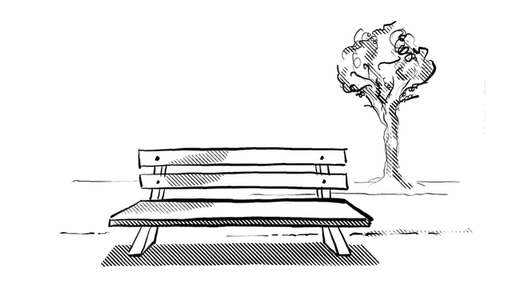
Tip: intermediary between client and project
You need to appoint a professional from your organisation as an intermediary between clients and the project team right from the start. This person can translate what clients want to share and vice versa. That is vital in all stages, from taking stock of wishes and needs through to the implementation.’
Roy Beumers, manager innovation & funding at Zuyderland
Digital umbrella
In the second stage, the partners wanted to install a “digital umbrella” to facilitate meeting each other. Beumers: ‘When looking for grantsto fund this,we discovered the ZonMw programma Active and Assisted Living (AAL).’ The first project that Zuyderland submittedwas Co-Living, a virtual social community encouraging older people to take part in activities. The software allows users to invite others to participate too. In another project – CaMeLi - an avatar supervised seniors in their daily activities. ‘From the user perspective, we introduced this innovation a bit too early because the technology did not function really well back then. Nevertheless, people did see the avatar as a sort of buddy. This provided the foundation to develop innovations that enable older people to better participate.’
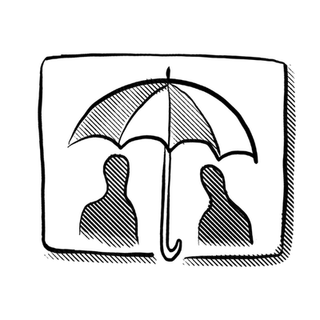
Targeted questions for employees
Within Zuyderland, Beumers and Maarten Coolen, manager information, automation and innovation in Hoogstaete have a long history of cooperation. Coolen emphasises the importance of closely involving care staff in projects. It’s not effective to just ask them an open question about how technology could help them. ‘We’ve held many sessions with our employees. We asked them: what do you need? How can we help you? But that failed to provide enough information. Instead, you need to come up with clearly defined questions and ask for their feedback on concrete proposals. That is one of the things we’ve learned from those projects.’ Another outcome of the European projects is a far more intensive collaboration between care organisations and technology partners. It is not about being the first to hit the headlines with a snazzy robot. It is working and learning together that creates opportunities.
Lesson: learn from your mistakes
‘Many fantastic ideas don’t work out as you thought they would. For instance, you devise a robot with many different functions, but not all of them actually work. Then you need to remember that this is not a failure, but part of the process. You keep on learning valuable lessons in every project you undertake.’
Maarten Coolen, manager information, ICT and innovation at Hoogstaet
What do you need to get good ideas on track?
Read about the second stage of the journey >
Quickly build up a network
‘If you’re new to the world of technology and care, it may all seem abracadabra. Technology and care are two different worlds. So you need to be aware of that and, as a care organisation, maintain close contacts with your technology partners. European programmes, such as AAL, really learned us to see the wood for the trees. We simply dived in and made our first contacts at an EU congress in Helsinki. Then we joined the front line when the AAL programme was launched. What makes such a programme so attractive, is that you are able to quickly build up an interesting network.’
Roy Beumers, manager innovation & funding at Zuyderland
Keep both feet on the ground
‘The world of technology brims with high-flown presentations or slick product videos. But you’re often left wondering why something that sounded so good in theory, fails to work in practice. Over the years, Zuyderland has learned it is better to simply keep both feet on the ground and to not create unrealistic expectations. Our motto is: do what you’re good at, stick to your principles, be proud of what you achieve and never make things look better than they actually are. Don’t promise the moon because, in reality, you’ll probably be very happy when just half of the results are in line with your expectations.’
Maarten Coolen, manager information, ICT and innovation at Hoogstaete
Second stage
Exploring opportunities
A clear vision on innovation yields great ideas. But how to predict whether such ideas will actually work in practice? Zuyderland isn’t afraid to take the lead and to try things out “that still have a long time-to-market”, as Coolen puts it. Ideas that, in the end, might never result in products. By experimenting, you learn how seniors adapt to technology, and also how you can implement technology in work processes. This way Zuyderland discovered that you shouldn’t be afraid to take on a challenge. ‘During the first robot project, we thought: what on earth are we doing to our clients? And is this okay from an ethical viewpoint? Well, we needn’t have worried. They already called the robots by their first name within two days of their arrival. Some clients gave them cuddles and one of them even wrote a poem for robot Tom.’
Tom de Robot
In oktober hadden we er tijdelijk een bewoner bij.
Het was robot Tom en dus een Hij.
Hij verplaatste zich door de Hoogstaeter gangen.
Met zijn mooie blauwe ogen, rode mond en bolle wangen.
In de kleuren wit en een rustig blauw.
Was hij al vlug de lieveling van iedere vrouw.
De mannen zagen hem meer als een concurrent.
Wat moet je toch met zo n robot vent.
Hij zat ook vol met dolle dwaze streken.
Zelfs zijn tong kon hij naar je uitsteken.
Als je hem aanraakte antwoorden hij met een rustige stem.
Daardoor was ik al een beetje verliefd op hem.
Al heeft hij ook geen menselijk brein.
Hij kan veel voor je doen, dat is zijn geheim.
Voel je, je eenzaam of ben je soms bang.
Kan hij een vriend zijn van belang.
Ik denk dat hij voor velen een maatje kan zijn.
In tijden van verdriet, of perioden van pijn.
Ik kan er tenminste al van dromen.
Dat hij misschien volgend jaar terug zal komen.
Dan gaan we vast een mooie tijd met hem beleven.
Dat geeft plezier en afleiding in ons leven.
Mevr. Schrijen. Kamer 201
Lesson: learn from scientists and teach them something too‘You can learn an awful lot from each other in collaborative projects. For example, we’ve learned about the view on innovation of universities. It is interesting to discover that you can also approach a practical problem in a scientific manner. Subsequently, it’s up to us to convert that into a concrete application. Because universities are less strongly focused on doing that.’
Maarten Coolen, manager information, ICT and innovation at Hoogstaete
Room for experimentation
Just experiment, emphasises Coolen. But he immediately adds: don’t focus too much on “distant” technology. Conduct experiments with existing products as well. ‘At a certain point, we had a lot of cutting-edge innovation projects with advanced technology. But you also need tools that can help employees and clients today and not just in another 10 years’ time.’ However, the problem is that the gap between everyday practice and what current technology can offer. Coolen: ‘Startups, in particular, are keen to introduce us to their interesting, new technology. They ask if they can “borrow” our clients for their practical tests. Sometimes these are strongly technology-driven products for which we need to adapt our processes. But, to be honest, it should be the other way round.’ Nevertheless, Zuyderland does sometimes respond to these requests, says Coolen. Because it is important for a care organisation to help in thinking about the future. ‘Accordingly, you then need to offer those startups the opportunity to learn and to develop things as well. ‘
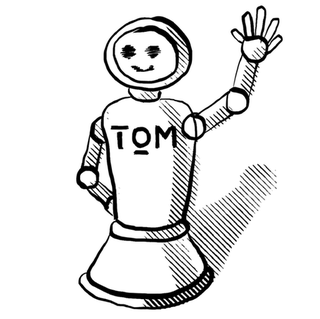
Tip: let techies pitch their ideas
‘Invite companies to come and pitch their idea. Reserve half a day each month and say: you’re welcome to drop by, promote your products and ask us what we would need from you. That sometimes leads to a great collaboration.’
Roy Beumers, manager innovation & funding at Zuyderland
Leader of the process
The most important thing to increase your chances of success, adds Beumers, is to stick close to your strategy and, in particular, take the lead. ‘Make sure that you have a central role within the consortium. Assume responsibility for coordinating the process. Not just by itemising the wishes of your clients and employees or during testing, but in drawing up the business plan as well. Don’t entirely leave that up to the developers. If you take the lead in the whole process, then you will know whether something has derailed along the way. Otherwise, you could easily end up with technology that does not meet your expectations in the slightest.’
Innovating based on your vision
Zuyderland is a chain organisation that comprises everything: household help, home care, care centres and 2 hospitals. Developments in hospitals also create opportunities at other locations. For the construction of a new hospital – expected to be ready in 10 years’ time – plans for e-health are already in the pipeline. The idea is to realise a smart health centre with a control board where all the data come together. This digital centre will be the entry to the new hospital – from admission to discharge – to which other care organisations can be connected as well, explains Roy Beumers. ‘Ideas like these also emerge from projects that we carried out within AAL. If you have a clear vision on innovation, individual projects should fit within a framework for the continuous development of new ideas and initiatives.’
Tip: Organise one-day ‘internships’ for project partners
‘Allow the researchers from the university and technical professionals to come and participate in a care organisation for a day. A one-day ‘internship’, as it were. That will give them the chance to see a world that is perhaps entirely different from what they could have imagined. This is a great way of bringing theory and practice together.’
Maarten Coolen, manager information, ICT and innovation at Hoogstaete
Third stage
Developing and experimenting
The joint development of technology becomes far more effective if you, as a care organisation, take the lead. Beumers: ‘I estimate that about 90% of organisations do not assume that role. But when you are the coordinator, you can influence the processes and the co-creation. Because, eventually, everything lands on your desk.’ That allows you to quickly change gears in the trial and error stage of joint development. Zuyderland often participates in several trials and works in living labs+ to produce successive proofs-of-concept + . If you’re not in the lead, states Beumers, the risk is that a technological partner will approach you at the end of their development process. And show you a product that they want to try out in your organisation. Whereas in co-creation, you jointly take the intermediate steps and you adjust course, if necessary.
Tip: don’t determine things in advance
‘Never simply make assumptions beforehand. Don’t think you can figure out in advance how older people will respond to technology. Robots and avatars are far more easily embraced than everybody often thinks. A simple touchscreen for applications is fine but older people are gaining more and more technological knowledge.’
Maarten Coolen, manager information, ICT and innovation at Hoogstaet
Confusion about the term ‘clients’
You need to take the time to learn each other’s language, adds Coolen. The ICT world is very different from the care world; the same words can have entirely different meanings. If an ICT guy talks about a “client”, he means an application that communicates with the server. But when I use the word “client” in that same meeting, it refers to an older person. In care, the word “services” means the service you provide to older adults, but for an ICT person, it denotes a digital information transfer. Coolen: ‘Before you realise it, you’re at complete cross purposes. Initially, it took quite some time to understand each other.’ Beumers: ‘And there is something else you need to be aware of when it comes to communication. If people in ICT say something is ready, they mean the technical part is ready. Whereas we always say that a solution is only ready once it works for the end user.’
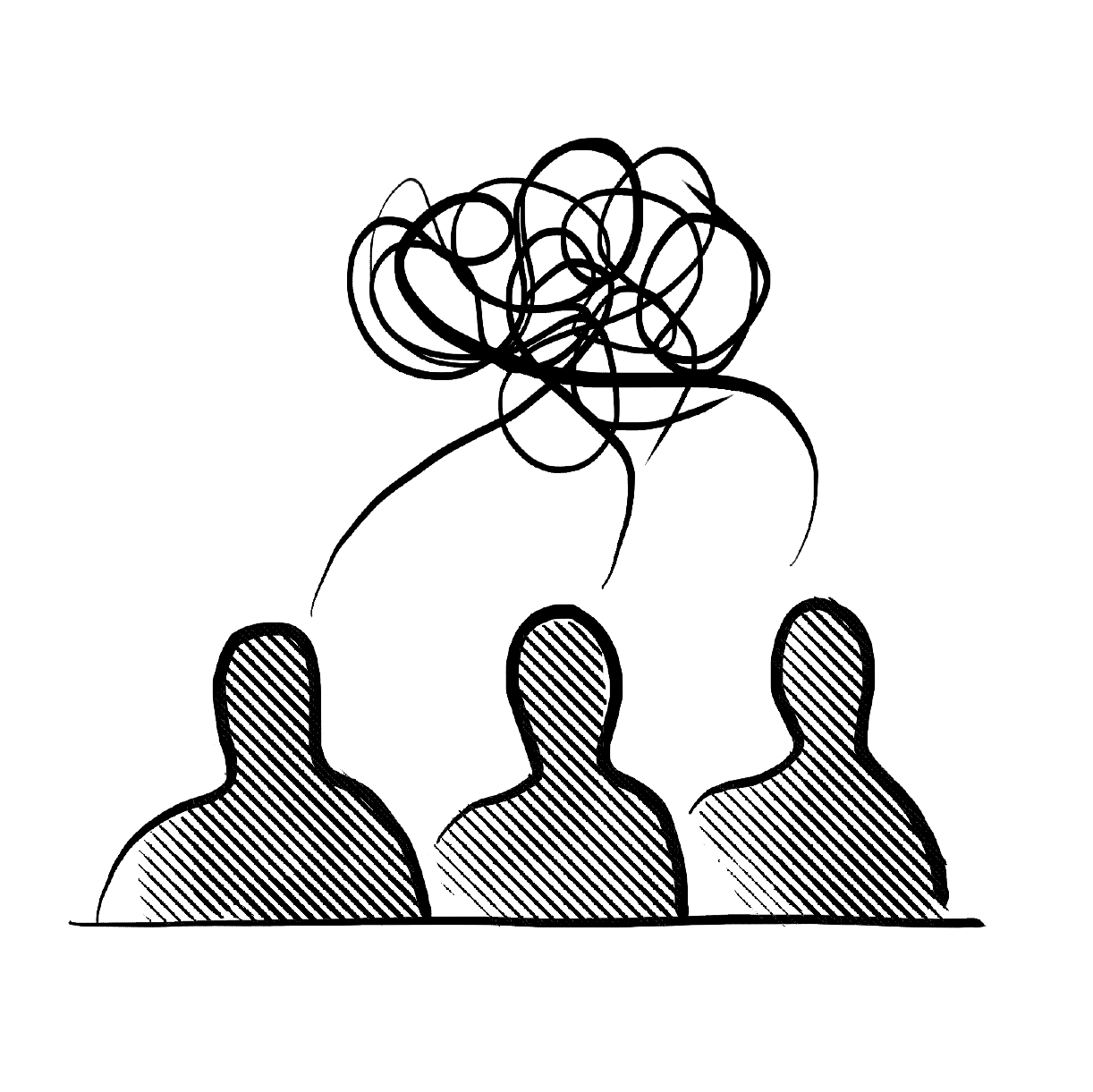
Pitfall: technology disengaged from practice
‘If you give the technical developers complete freedom, then you’ve lost the initiative. Do not wait, after the conceptual stage, until the technology is completely ready before you test it with the end users. Keep your finger on the pulse throughout the entire process. Because if things do not work out as expected at all, then your project ends with everyone feeling frustrated.’
Maarten Coolen, manager information, ICT and innovation at Hoogstaet
Community concepts for older people
The community approach of Zuyderland integrates care into the local community where all generations and groups live and learn together.
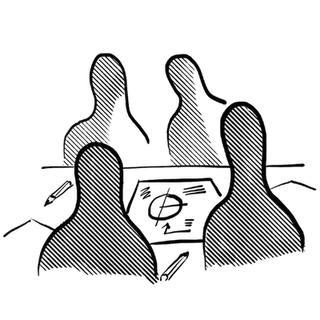
Co-creation prevents bloopers
For Coolen, the lessons of co-creation + and co-design + have been crucial. Collaboration involves many different people: from older people to scientists and from ICT people to students. Coolen: ‘Especially working with students is fun. Bring together young people from different courses and let them jointly work on something for a day. At the end you will be flooded with many original solutions. Co-creation also protects you from unexpected bloopers. Beumers relays a story about a robot with superbly functioning emotion recognition software. However, when used with older people, the robot scored just 15% on recognising emotions and not the intended 80%. So, what went wrong? The software had been developed using young people. The programme could not cope with wrinkled faces…
Co-creation
A form of cooperation in which all participants exert an influence on the process and the outcome of this process.
Co-design
is an approach to design which actively involves all stakeholders in the design process to help ensure the result is usable and meets their needs.
How do you acquire sufficient extra funding?
Read more about the fourth stage of the journey >
A robot is not a ‘lifeless thing’
‘I was moved to witness how older people appreciated robots and avatars in one of our projects. They really saw the robot as a buddy. Despite the fact that, initially, the entire environment – from family to health insurer – were highly sceptical. Their attitude was: the robot is a lifeless thing and surely care is about the human touch? We asked the older people lots of questions during the development of the avatar: do you want a man or woman, young or old, informally or formally dressed? We discovered that both men and women chose a woman. And that they would like an informal character. You take all of those lessons with you in the subsequent steps.’
Roy Beumers, manager innovation & funding at Zuyderland
Tip: decide how to move forward together
‘Break down the barriers between organisations and learn from each other. Don’t think that you can and should be able to do everything yourself. Investigate what can help you move forward together.’
Roy Beumers, manager innovation & funding at Zuyderland
Innovation takes a lot of time
‘Developing technology is not just a side job you can take on as an extra task. Do not underestimate how much time this takes. We have learned that you really need to make somebody available for a project. For example, an occupational therapist with an affinity for technology. You need somebody who can build a bridge between the end users – professionals, older people, relatives – the project team and the technology. Somebody who identifies the needs, informs, tests things with the users and subsequently provides the project team with feedback. Choose people who do not mind if things fail to work out now and then. In particular, they need to be interested in the process of finding solutions together.’
Maarten Coolen, manager information, ICT and innovation at Hoogstaete
Living labsAn approach in which innovative ideas and concepts are developed together with users and tested in real life situations.
Proofs-of-concept
A method to establish whether an idea, technology or functionality is feasible and connects with the experiential world of the intended users.
Fourth stage
Actual use in practice
Zuyderland never just takes on a project for the sake of doing a project, says Beumers. ‘We choose something because it fits our strategy. Even if a project does not completely succeed – which happens a lot – it is still instructive from a strategic perspective. Which lessons learned can we use in a following step? Has something emerged that could adapt our strategy? Such an approach gives you the drive to get the most out of each project, even the less successful ones.’ And regardless of project results, the actual use of technology in care is a process that requires time. Older people do not always wish to cooperate, and employees - often already somewhat older - do not automatically embrace technology. Beumers: ‘The care sector is not an easy place to introduce technology. But in programmes such as AAL, positive steps forward have been made. Just a few years ago, there were scarcely any technological applications, and now you encounter them more often.’
Proud of working with older people from the start
‘We are very proud of the fact that, for many years, we’ve been developing technology wíth older people from the first stage onwards. As a care organisation, we are a frontrunner in this respect. This results in a high acceptance of care technology at our locations. We believe that social robots and avatars can have an important function in care for older persons. However, the technology needs to develop further before large-scale applications will become possible.’
Maarten Coolen, manager information, ICT and innovation at Hoogstaete
Structurally obtaining extra funds
Beumers describes the Project Office Additional Funding (PAG) of Zuyderland, which aims to find additional funding for research and innovation. That office fits within the broader strategy of Zuyderland too. ‘In 2005, when we started, there were just the 2 of us and we raised about 1 million euros per year. Now we number 22 employees and we manage to secure 35 million euros in funding per year. They are all people who understand the sector and know how it works.’ With the funds raised, Zuyderland can continue to develop innovative projects, also in the area of technology. Funding sources range from equity funds, donors and fiscal constructions to national and European funding. The hospital division of Zuyderland has realised a 10-year contract with health insurer CZ, which is intended for large-scale e-health applications to keep care affordable. Such an agreement also provides possibilities for innovation in long-term care.
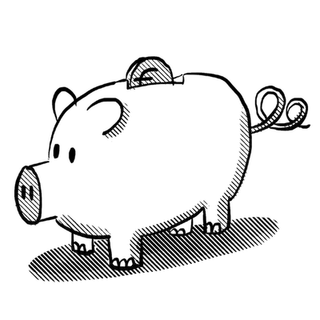
Lesson: serious partner for large companies
‘We’ve been able to make a move from development projects to trajectories that come closer to the market. And that has taught us to more clearly define our questions, so now we are a serious partner for large players such as Philips and Siemens. Even in the trajectories with them, we still manage to retain the initiative thanks to our well-articulated questions.’
Maarten Coolen, manager information, automation and innovation at Hoogstaete
Implementation from the inside out
Technology that has become pretty standard – such as tablets, domotics and fall detection – is now widely used within Zuyderland. But the deployment of more savvy technology takes longer. The organisation realises that a technological transition will require time. Coolen: ‘We’ve decided to conduct all experiments at the Hoogstaete location so that we have an up-to-date venue in terms of digital infrastructure. And a location where people work who, for the most part, already have an affinity with technology. Some employees are functioning as a digital coach and are the source of expertise in the department. We are always looking for models to support the implementation of technology in a targeted manner. And to ensure that the necessary cultural changes can be managed inside the organisation.’
Financing with additional funds
‘We have learned that you cannot fund innovation on your own. There is no such thing as an innovation allowance per client. Resources within care are limited; consequently, you need to co-fund innovation via project grants and private funding. The hospital division of Zuyderland has signed a 10-year contract with health insurer CZ with the aim of realising large-scale e-health applications to keep care affordable. This is very innovative, because the current funding structure – procurement of yearly contracts, pay per activity – is not ready for the digital transformation of care. It would be better to facilitate this with multiannual agreements with insurers.’
Roy Beumers, manager innovation & funding at Zuyderland
From idea to market success takes almost 20 years
‘In all of our psychogeriatric departments, we work with Paro, a therapeutic robot in the form of a seal. If you stroke this robot or talk to it, the seal responds with sounds and movement. It sometimes makes people with severe dementia who have completely turned in on themselves, blossom like a flower. When the Japanese developer came to visit us, I asked him when he began developing Paro. His answer: ‘I started in 1998 and in 2007, I’d reached the stage that it could be launched on the market.’ I met the developer in 2016, and it was only in that year that Paro had become the most sold therapeutic robot in the world. Just imagine, it took almost 20 years for that to happen…’
Roy Beumers, manager innovation & funding at Zuyderland
Breakthrough: the introduction of tablets‘The biggest breakthrough in the introduction of technology for older people was the launch of the tablet. The iPad from Apple was the first in 2010. Suddenly there was a device that older people were indeed able to use. Back then, the smartphone was still too small and unmanageable for older people. However, the difference between the tablet and smartphone has become less distinct in the intervening years.’
Roy Beumers, manager innovation & funding at Zuyderland
x